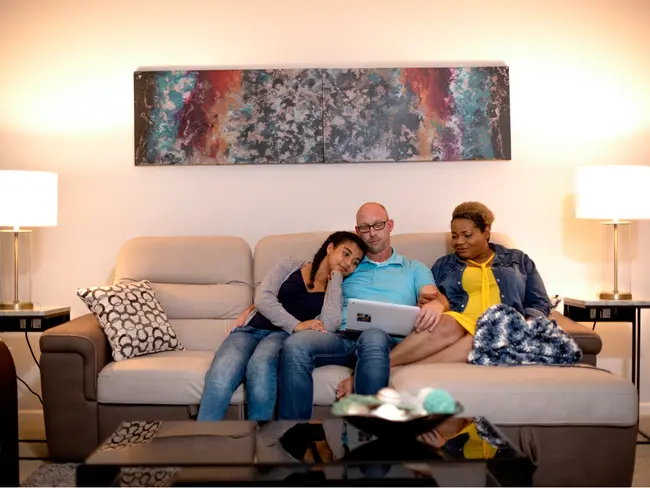
Solar in California
California, Take Control of Your Energy Bills
*Offer limited to customers of the following utility companies: PG&E, SDG&E & SCE
California, go solar with confidence
Upgrade your home with solar panels and battery storage, and get expert installation from America’s #1 provider. California residents opt for a rooftop solar system with Sunrun for reliable power that keeps up with your needs.
Considering going solar in California?
California's energy landscape is changing. Adapt with a home solar system engineered for the state's unique demands and opportunities. With over 17 years of experience, Sunrun is the #1 home solar & battery company in America for a reason.
Over the past 10 years, electricity rates in California have skyrocketed, with residential customers seeing increases up to 110%[1]. Looking ahead, experts predict rates will continue rising at a similar pace, further squeezing household budgets[2]. By making an investment in solar and home battery storage, California homeowners can take control of their energy costs and insulate themselves from these unpredictable and relentless utility rate hikes. A solar-plus-storage setup allows you to generate your own renewable power and store excess energy for use during periods of peak pricing, providing reliable, cost-effective, energy regardless of what happens with the grid.
Powering California: Easy process. Better technology. Happy customers.
Sunrun subscription plan vs. solar panels ownership
Our solar lease subscription plan offers predictable, affordable rates for as little as $0 down in upfront costs, or you could purchase solar panels outright.
Sunrun subscription plan
Leasing solar panels
Benefits
- Predictable, affordable payments
- Protect against rising utility costs
- 25-year warranty on equipment and workmanship, 10 year warranty on roof penetration, and 24/7 system monitoring. Sunrun will replace equipment for life of contract
Who maintains?
- Sunrun owns and maintains
- Plan transfers to new owners if you sell your home
Payments
- $0 to little down
- Locked in monthly solar lease
Solar panels ownership
Purchasing solar panels
Who maintains?
- I service and care for my system myself
- Transfers to new owners if you sell your home
Payments
- Full system cost (cash upfront) or monthly payments (loan)
A home battery system is more crucial now than ever in California



Power when you need it most
Keep your home running smoothly during outages
Control energy costs effectively
California's time-of-use rates make batteries essential. Store your solar energy for peak hours to maximize savings under new net metering rules.
With outages and wildfires becoming more common in California, a home battery lets you power through any grid outages so you can enjoy more peace of mind.
California’s new solar laws reward self-consumption. A home battery system stores daytime excess power for evenings, maximizing your savings.
FAQs
What are the benefits of California solar panels and battery storage?
California adopted new solar laws in 2023, making the pairing of a battery with solar panels even more important. Before these changes, you could send extra energy to the grid for a significant solar credit. Then, when you need to use energy at night, those solar credits would offset that cost. However, the solar credits have dropped by about 70%, so when you need to use energy at night, the cost is hardly being offset.
This is where the battery comes in. Instead of sending solar energy to the electric grid for a tiny credit, you can store that energy, and use it to run your home.
What is the new solar law in 2024 in California?
In California, the net metering policy is evolving, and we're here to keep you in the know. We actively follow the changing energy landscape (like NEM 3.0), and we're committed to ensuring that you have the latest information and support as you make the switch to solar.
PG&E rates increased again on January 1, 2024. PG&E rates did increase on January 1, 2024, with typical residential customers seeing an average monthly increase of about $32.50, which translates to roughly $390 over the course of the year [3, 4]. Get maximum protection from utility rate hikes with a Sunrun solar system and protect yourself from outages with backup power from a battery system. With the ability to lock in predictable utility bills, you can enjoy reliable, affordable power for the next 25 years.
Does California offer solar incentives to get a solar system?
We do the research and help you take advantage of all the solar incentives available to you, even as the policies and incentives change. We work with you the whole way through — from designing solar systems to finding state and federal tax credits and incentives to going to your home to install solar panels. As an industry leading California solar provider, we pride ourselves on doing things the right way. We work hard to bring you competitive, affordable rates for premium products with unmatched service and guarantees.
Is it worth it to go solar in California?
Now is the ideal time to invest in renewable energy with a residential solar system for California homeowners. The sunny climate and soaring utility rates make rooftop solar panels a smart investment that pays dividends for years to come. With Sunrun, you'll lock in predictable utility bills and keep your lights on even when the rest of the neighborhood goes dark. Sunrun has already saved California ratepayers an estimated $3 million annually[5].
Can I finance solar in California?
We offer a number of payment plans to help you find the best plan for your situation. The Sunrun Solar Subscription is the best selling subscription in America, but every home is unique. Solar customers have the choice to lease solar panels through the Sunrun Solar Subscription or to buy solar panels outright with an owned plan, where you can get a solar loan or pay upfront.
For you
Sources:
3. Calculation of average bill (excluding CARE and FERA rates) is based on $32.50/monthly rate